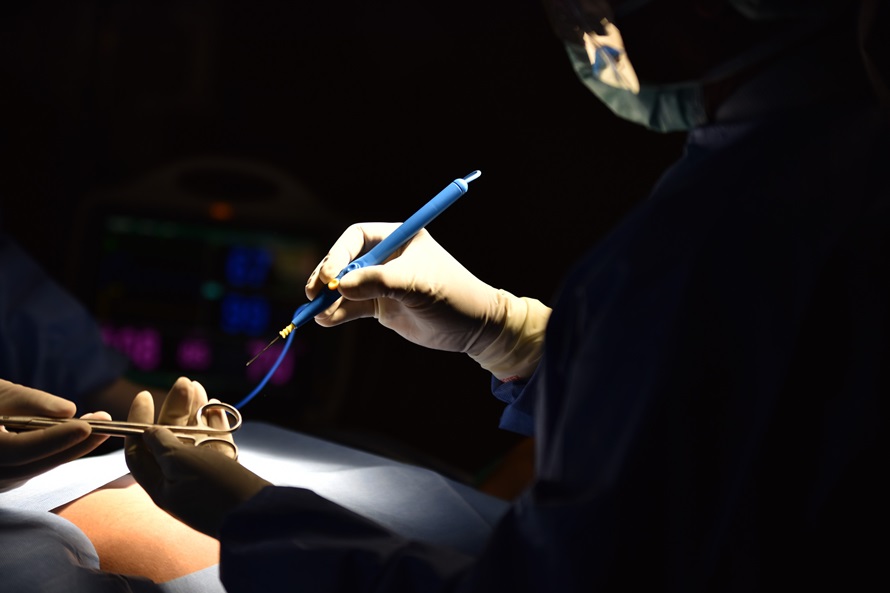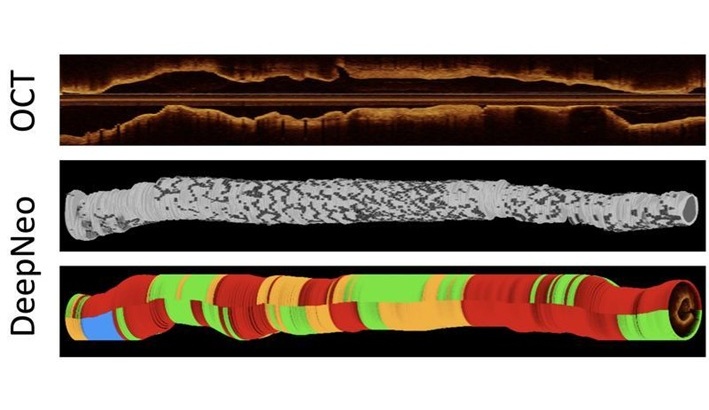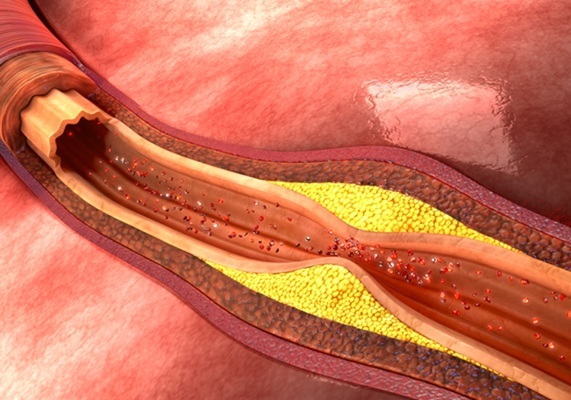Novel Prostate Biopsy Technique Lowers Infection Risk
|
By HospiMedica International staff writers Posted on 23 Sep 2024 |

Prostate biopsies are crucial for diagnosing prostate cancer, with approximately 3 million procedures performed globally each year. In the U.S., about 90% of these biopsies are conducted through a transrectal procedure. However, studies indicate that 5% to 7% of patients develop infections following this procedure, and 1% to 3% require hospitalization due to complications. To minimize infection risk, doctors typically prescribe a course of antibiotics before the biopsy. Now, a newer technique for collecting prostate biopsy samples has been shown to lower the risk of infection compared to traditional biopsy methods.
A multi-institutional clinical trial led by researchers at Weill Cornell Medicine (New York, NY, USA) and New York-Presbyterian (New York, NY, USA) evaluated a technique called transperineal prostate biopsy. In this procedure, prostate tissue is collected through a needle inserted into the perineum—the area between the rectum and the scrotum—while using local anesthesia to numb the region. This method avoids the infection-prone transrectal route, where the biopsy needle is inserted through the rectum. The study reported no infections among 382 men who underwent the transperineal procedure, compared to six infections (1.6%) among 370 men who received the traditional transrectal biopsy. This lower infection rate is especially notable because the men in the transrectal group were given a targeted course of antibiotics to mitigate infection risk, while those in the transperineal group received no antibiotics.
For patients undergoing the transrectal biopsy, the researchers implemented a personalized approach to antibiotic prophylaxis. Rather than prescribing broad-spectrum antibiotics, they tailored the antibiotics to cultures taken from the patient's rectum during a prostate exam before the biopsy. According to the study results, published in JAMA Oncology, this targeted antibiotic strategy significantly reduced the infection rate for the traditional transrectal biopsy group compared to national averages. However, the transperineal group achieved even greater success by completely eliminating infections, demonstrating a statistically significant advantage over the transrectal approach.
“Transperineal biopsy should be the new standard of care for prostate biopsy,” said Dr. Jim Hu, the Ronald P. Lynch Professor of Urologic Oncology at Weill Cornell Medicine and the director of the LeFrak Center for Robotic Surgery at NewYork-Presbyterian/Weill Cornell Medical Center. “It was as effective as the traditional transrectal biopsy approach at detecting cancer, but without the risk of infection or the need for antibiotics.”
Latest Surgical Techniques News
- DNA Origami Improves Imaging of Dense Pancreatic Tissue for Cancer Detection and Treatment
- Pioneering Sutureless Coronary Bypass Technology to Eliminate Open-Chest Procedures
- Intravascular Imaging for Guiding Stent Implantation Ensures Safer Stenting Procedures
- World's First AI Surgical Guidance Platform Allows Surgeons to Measure Success in Real-Time
- AI-Generated Synthetic Scarred Hearts Aid Atrial Fibrillation Treatment
- New Class of Bioadhesives to Connect Human Tissues to Long-Term Medical Implants
- New Transcatheter Valve Found Safe and Effective for Treating Aortic Regurgitation
- Minimally Invasive Valve Repair Reduces Hospitalizations in Severe Tricuspid Regurgitation Patients
- Tiny Robotic Tools Powered by Magnetic Fields to Enable Minimally Invasive Brain Surgery
- Magnetic Tweezers Make Robotic Surgery Safer and More Precise
- AI-Powered Surgical Planning Tool Improves Pre-Op Planning
- Novel Sensing System Restores Missing Sense of Touch in Minimally Invasive Surgery
- Headset-Based AR Navigation System Improves EVD Placement
- Higher Electrode Density Improves Epilepsy Surgery by Pinpointing Where Seizures Begin
- Open-Source Tool Optimizes Placement of Visual Brain Implants
- Easy-To-Apply Gel Could Prevent Formation of Post-Surgical Abdominal Adhesions
Channels
Critical Care
view channel
AI Model Analyzes Patient Data to Diagnose Multiple Sclerosis With 90% Accuracy
Multiple sclerosis (MS) is a chronic inflammatory condition affecting the central nervous system. Most patients initially experience the relapsing-remitting form (RRMS), characterized by periods of symptom... Read more
Magnetically Navigable Microparticles Enable Targeted Drug Delivery
Abdominal aortic aneurysms (AAA) can be life-threatening if not treated and result in nearly 10,000 deaths annually. Researchers working to improve treatments for AAA could now make it possible for doctors... Read more
AI-Powered Algorithm Automates Analysis of Coronary Stents After Implantation
Every year, over three million people globally receive stents to open blocked blood vessels caused by heart disease. However, monitoring the healing process after stent implantation remains a significant challenge.... Read morePatient Care
view channel
Portable Biosensor Platform to Reduce Hospital-Acquired Infections
Approximately 4 million patients in the European Union acquire healthcare-associated infections (HAIs) or nosocomial infections each year, with around 37,000 deaths directly resulting from these infections,... Read moreFirst-Of-Its-Kind Portable Germicidal Light Technology Disinfects High-Touch Clinical Surfaces in Seconds
Reducing healthcare-acquired infections (HAIs) remains a pressing issue within global healthcare systems. In the United States alone, 1.7 million patients contract HAIs annually, leading to approximately... Read more
Surgical Capacity Optimization Solution Helps Hospitals Boost OR Utilization
An innovative solution has the capability to transform surgical capacity utilization by targeting the root cause of surgical block time inefficiencies. Fujitsu Limited’s (Tokyo, Japan) Surgical Capacity... Read more
Game-Changing Innovation in Surgical Instrument Sterilization Significantly Improves OR Throughput
A groundbreaking innovation enables hospitals to significantly improve instrument processing time and throughput in operating rooms (ORs) and sterile processing departments. Turbett Surgical, Inc.... Read moreHealth IT
view channel
Printable Molecule-Selective Nanoparticles Enable Mass Production of Wearable Biosensors
The future of medicine is likely to focus on the personalization of healthcare—understanding exactly what an individual requires and delivering the appropriate combination of nutrients, metabolites, and... Read more
Smartwatches Could Detect Congestive Heart Failure
Diagnosing congestive heart failure (CHF) typically requires expensive and time-consuming imaging techniques like echocardiography, also known as cardiac ultrasound. Previously, detecting CHF by analyzing... Read moreBusiness
view channel
Expanded Collaboration to Transform OR Technology Through AI and Automation
The expansion of an existing collaboration between three leading companies aims to develop artificial intelligence (AI)-driven solutions for smart operating rooms with sophisticated monitoring and automation.... Read more
















